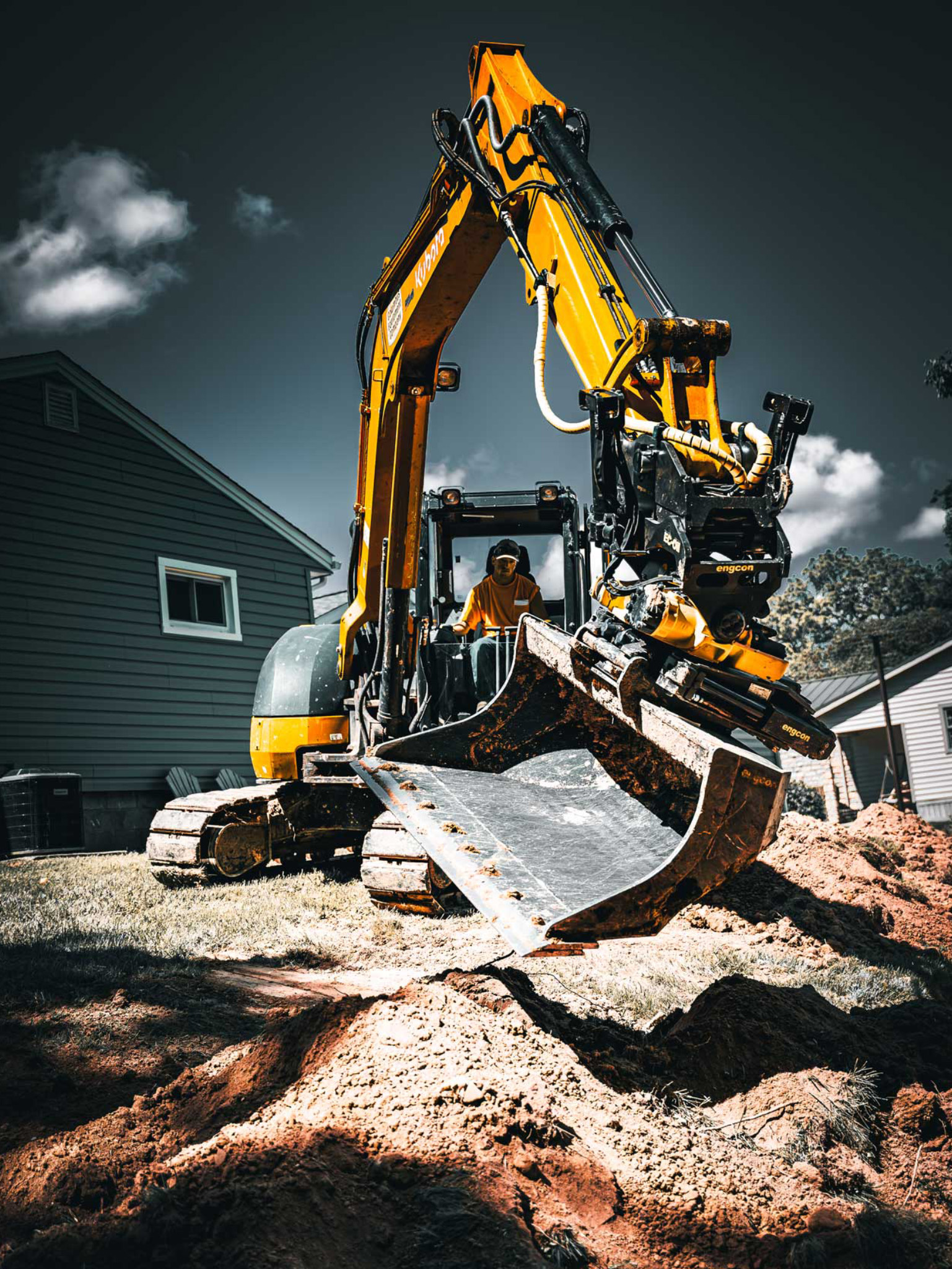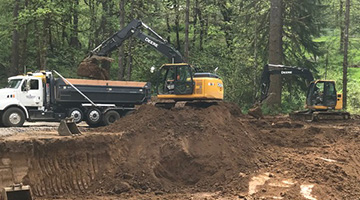Excavating Ohio - Leading Excavation Service Providers for Ohio Projects
Excavating Ohio - Leading Excavation Service Providers for Ohio Projects
Blog Article
Introducing the Art of Excavation: Pro Tips for Safe and Efficient Digging
As soil is transformed and earth is moved, the intricacies of excavation expose themselves, demanding a keen understanding of equipment, soil structure, safety and security methods, and environmental factors to consider. The know-how required to navigate these components efficiently can suggest the difference in between an effective excavation job and a potential catastrophe.
Importance of Appropriate Tools
To make sure the safety and effectiveness of any type of excavation task, making use of the appropriate tools is vital. Excavation tasks differ in extent and intricacy, varying from tiny domestic landscape design tasks to massive building and construction tasks.
Excavators are fundamental items of equipment in any kind of excavating procedure. These functional equipments can be found in various dimensions to match various task demands. Tiny excavators are perfect for smaller tasks, while bigger excavators take on extra comprehensive tasks effectively. Backhoes are one more vital devices type, incorporating the features of a loader and an excavator in one maker. They are useful for tasks requiring convenience and ability to move.
In addition to excavators, other essential equipment includes dump vehicles, bulldozers, and plates. Dump vehicles are important for removing and transporting excavated products, while trenchers are utilized for digging deep and narrow trenches. Bulldozers master tasks that need pushing huge quantities of dirt or debris. By purchasing the suitable tools, excavation projects can be finished safely, promptly, and with precision.
Recognizing Soil Make-up
An extensive grasp of dirt composition is basic for performing excavation projects with accuracy and security. Recognizing the various types of dirt is important as it directly influences excavation approaches, equipment choice, and general job efficiency.
Sand bits are the largest and provide great drainage yet supply little communication. Silt fragments are smaller sized than sand yet bigger than clay, providing moderate drainage and cohesion. Clay fragments are the tiniest and supply high cohesion however poor drainage. Organic matter, such as decomposing plant product, impacts dirt fertility and stability.
Prior to beginning excavation, carrying out soil examinations to establish its structure and attributes is crucial. This info assists in selecting the ideal equipment, implementing safety and security procedures, and establishing excavation techniques customized to the certain dirt conditions - septic ohio. By comprehending dirt structure, excavation professionals can boost job outcomes while making certain safety and adherence to ideal practices
Precaution and Procedures
Recognizing soil make-up is the cornerstone whereupon safety and security actions and protocols for excavation tasks are built, making sure the well-being of employees and the success of the endeavor. When it involves safety throughout excavation, there are numerous key steps that must be carried out to minimize risks and stop crashes.
Most importantly, prior to any digging begins, an extensive examination of the website need to be conducted to identify any kind of possible hazards such as underground energies, unsteady dirt problems, or neighboring frameworks that can posture a risk. It is vital to have a competent person supervise the excavation process to guarantee that all safety and security methods are adhered to purely.
Moreover, all employees associated with the excavation needs to be effectively learnt risk-free excavating methods and the correct operation of devices. Individual safety tools (PPE) such as hard hats, high visibility garments, handwear covers, and safety boots ought to be used in any way times to decrease the risk of injuries. lancaster excavation. Regular security meetings and toolbox talks must also be carried out to maintain all employees educated concerning possible hazards and reinforce risk-free job methods. By sticking to these precaution and methods, excavation jobs can be completed effectively and useful content without occurrence.
Effective Excavation Planning
When embarking on an excavation job, meticulous preparation is necessary to ensure performance, security, and effective outcomes. Reliable excavation planning entails several vital steps that are critical for the smooth execution of the job.
Once the site analysis is complete, the following step is to produce a clear timeline and timetable for the excavation activities. This consists of figuring out the series of tasks, tools demands, and workforce allotment. Correct scheduling assists stay clear of delays and guarantees that the task remains on track.

Moreover, communication among all team participants is vital throughout the planning phase. Clear directives, regular updates, and effective sychronisation are vital for an effective excavation task. By spending time and effort in meticulous planning, excavation groups can check over here significantly boost productivity, minimize risks, and achieve effective end results.

Taking Care Of Environmental Considerations
With raising focus on ecological sustainability in building and construction practices, taking care of environmental factors to consider has actually become a vital aspect of excavation tasks. Excavation tasks have the possible to affect the surrounding setting through soil erosion, sediment runoff, habitat disruption, and contamination of water resources. To mitigate these threats, it is vital to carry out best techniques that prioritize ecological protection.

In addition, proper waste management is vital to avoid soil and water contamination. Implementing procedures for the disposal of hazardous materials, recycling of waste products, and reducing the use of harmful chemicals can dramatically reduce the ecological influence of excavation tasks. By integrating these techniques into excavation planning and execution, construction firms can make certain that their projects are not only safe and effective yet additionally ecologically accountable.
Conclusion
In conclusion, mastering the art of excavation calls for a detailed understanding of correct devices, soil composition, safety and security measures, and reliable preparation. By complying with these guidelines and taking into consideration environmental elements, excavations can be conducted securely and effectively. It is vital to prioritize safety and security and performance in every digging task to make sure effective outcomes.
As dirt is turned and planet is moved, the intricacies of excavation disclose themselves, requiring a keen understanding of tools, soil make-up, safety and security protocols, and ecological considerations.To guarantee the safety and efficiency of any excavation task, using the ideal devices is critical.A thorough grasp of dirt composition is basic for performing excavation tasks with accuracy and safety. Recognizing the different types of dirt is essential as it straight influences excavation techniques, tools choice, and total project effectiveness. By recognizing soil structure, excavation professionals can improve task outcomes while making sure safety and security and adherence check these guys out to best methods.
Report this page